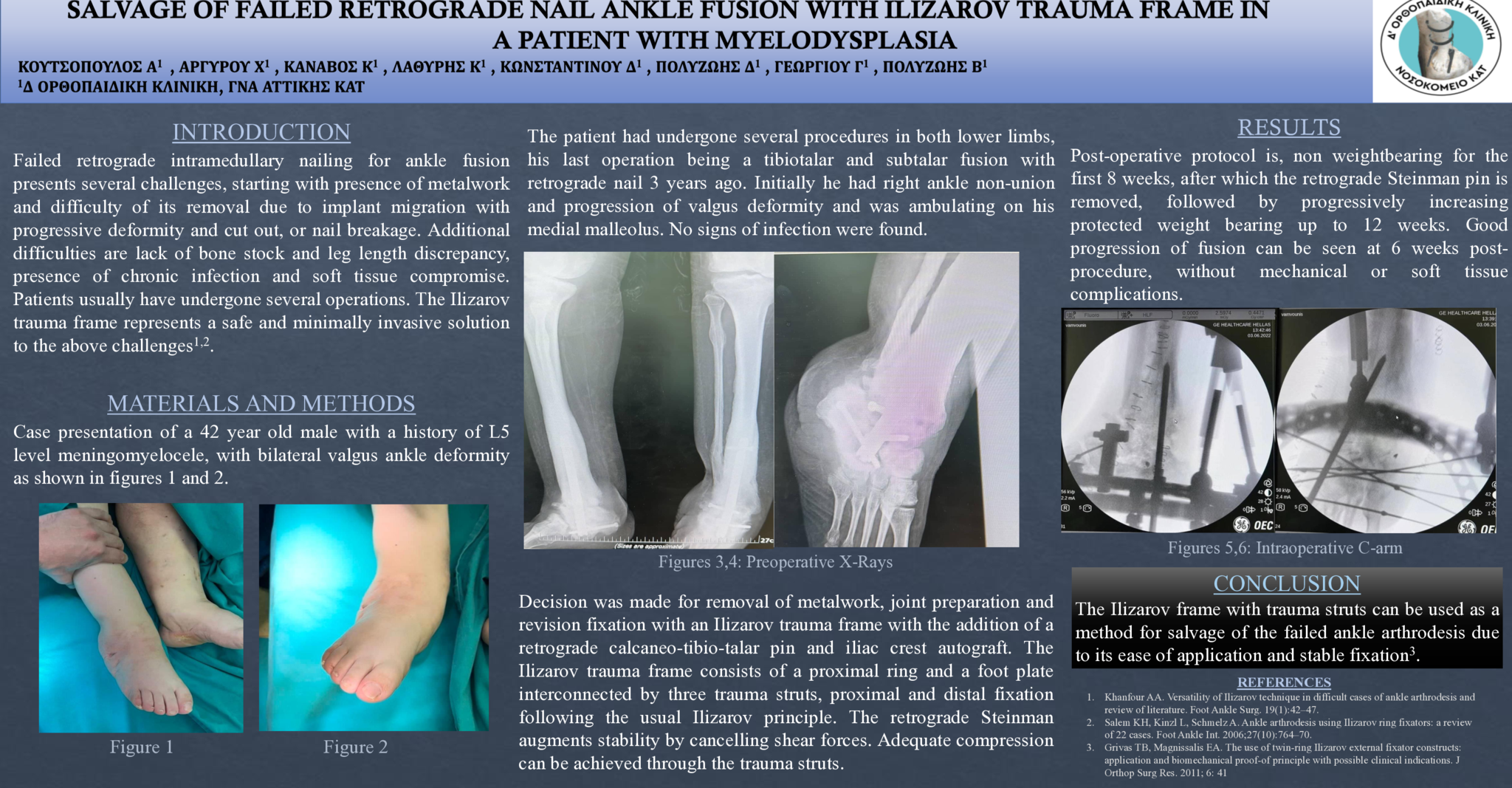INTRODUCTION
Failed retrograde intramedullary nailing for ankle fusion presents several challenges, starting with presence of metalwork and difficulty of its removal due to implant migration with progressive deformity and cut out, or nail breakage. Additional difficulties are lack of bone stock and leg length discrepancy, presence of chronic infection and soft tissue compromise . Patients usually have undergone several operations. The Ilizarov trauma frame represents a safe and minimaly invasive solution to the above challenges.
MATERIALS AND METHODS
Case presentation of a 42 year old male with a history of L5 level meningomyelocele, with bilateral valgus ankle deformity. The patient had undergone several procedures in both lower limbs, his last operation being a tibiotalar and subtalar fusion with retrograde nail 3 years ago. Initially he had right ankle non-union and progression of valgus deformity and was ambulating on his medial malleolus. No signs of infection were found. Decision was made for removal of metalwork, joint preparation and revision fixation with an Ilizarov trauma frame with the addition of a retrograde calcaneo-tibio-talar pin and iliac crest autograft. The Ilizarov trauma frame consists of a proximal ring and a foot plate interconnected by three trauma struts, proximal and distal fixation following the usual ilizarov principle. The retrograde Steinman augments stability by cancelling shear forces. Adequate compression can be achieved through the trauma struts.
RESULTS
Post-operative protocol is, non weightbearing for the first 8 weeks, after which the retrograde Steiman pin is removed, followed by progressively increasing protected weight bearing up to 12 weeks. Good progression of fusion can be seen at 6 weeks post-procedure, without mechanical or soft tissue complications.
CONCLUSION
The Ilizarov frame with trauma struts can be used as a method for salvage of the failed ankle arthrodesis due to its ease of application and stable fixation.
- 3 προβολές






